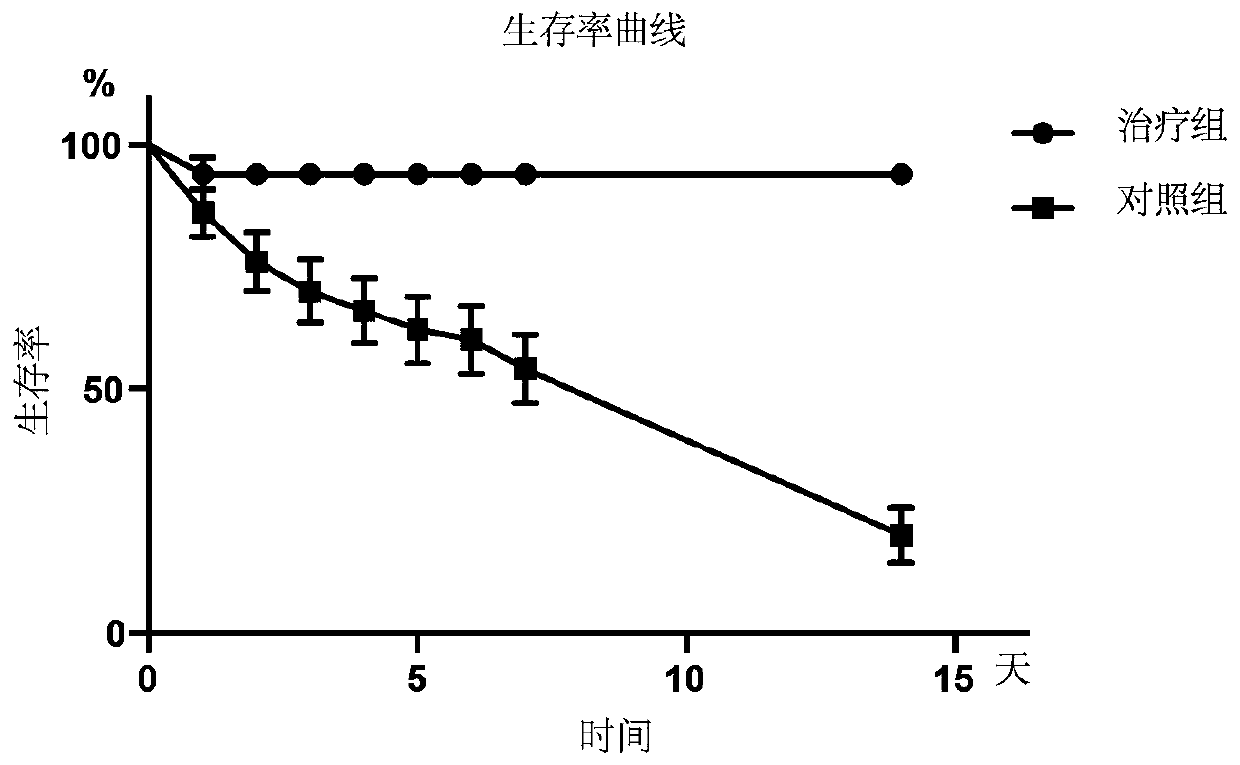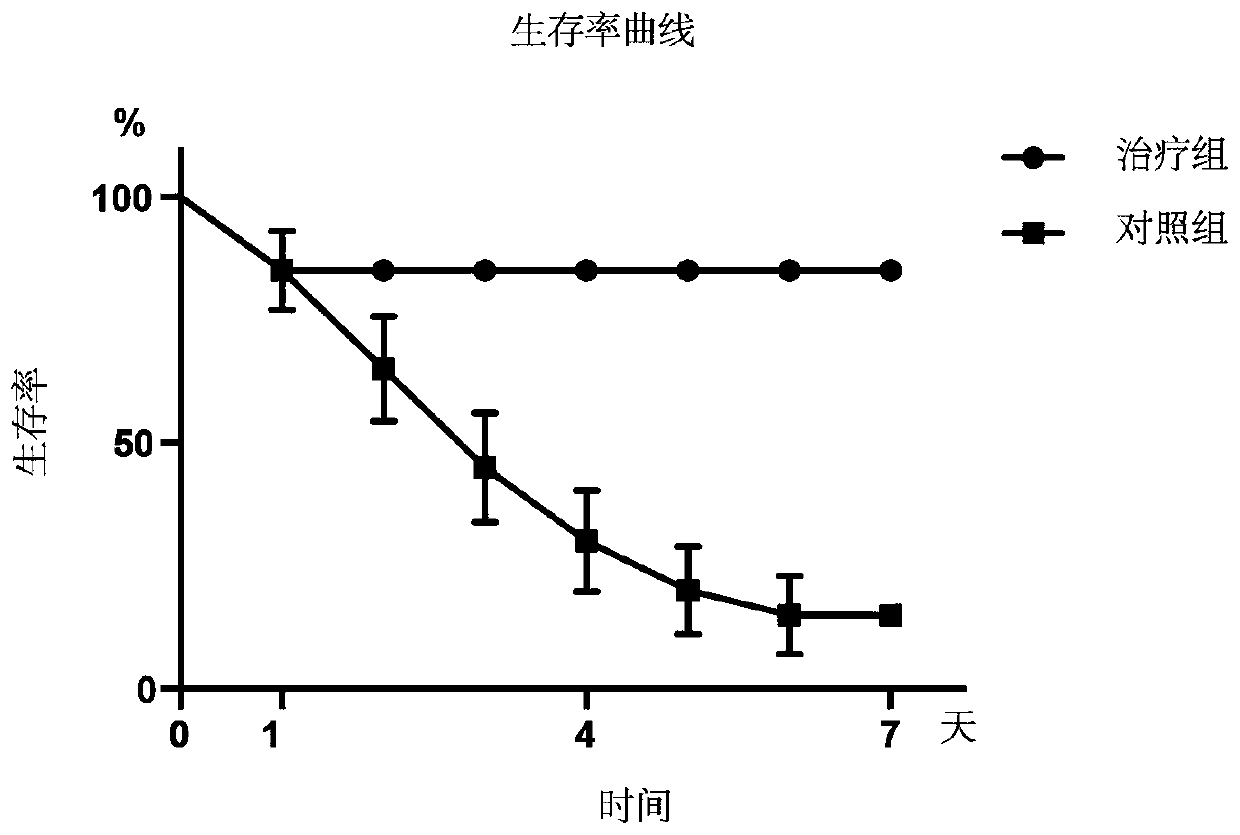Application of PPAR (peroxisome proliferators-activated receptor) gamma cytokine to preparation of hepatic failure treatment drug
A liver failure and cytokine technology, applied in the fields of clinical medicine, molecular medicine and biomedicine, can solve the problems of death of patients and shortage of donor livers
- Summary
- Abstract
- Description
- Claims
- Application Information
AI Technical Summary
Problems solved by technology
Method used
Image
Examples
Embodiment 1
[0043] Embodiment 1: Injection containing PPARγ cytokines treats a large animal (young pig) model of liver failure
[0044] Animal model: 30 male Chinese young pigs (8-10 kg) were randomly divided into two groups, 15 in each group. Each young pig was injected with D-gal 1.5g / kg in the jugular vein to create a liver failure model.
[0045] Test group: Multiple intravenous injections of PPARγ injection at fixed time points after D-gal injection, dose: 10ml / kg, twice a day.
[0046]Control group: inject the same amount of normal saline without PPARγ.
[0047] Neither the control group nor the experimental group received other drug treatment.
[0048] figure 1 It is a schematic diagram of the survival time curves of the young pigs of the experimental group and the control group, showing the survival rate of the young pigs of the experimental group and the control group. The results showed that the 3-day survival rate of young pigs in the treatment group containing PPARγ cytoki...
Embodiment 2
[0049] Example 2: The small animal (rat) model of liver failure treated by lyophilized powder injection containing PPARγ cytokine
[0050] Animal model: 100 male rats (200-250 g) were randomly divided into two groups, 50 in each group. Each rat was intraperitoneally injected with D-gal 1.5g / kg to make a liver failure model. The PPARγ freeze-dried powder and water for injection are prepared into a suspension.
[0051] Experimental group: 4 ml of PPARγ freeze-dried powder suspension was injected intraperitoneally at a fixed time point after D-gal injection, twice a day.
[0052] Control group: inject the same amount of normal saline without PPARγ.
[0053] Both the control group and the experimental group received no other drug treatment.
[0054] figure 2 Schematic diagram of the survival time curves of rats in the experimental group and the control group, figure 2 The survival rates of rats in the experimental group and the control group were shown: the results showed t...
Embodiment 3
[0055] Embodiment 3: The suspension containing PPARγ cytokine treats the rabbit model of liver failure
[0056] Animal model: 40 adult male rabbits (2000-2500 g) were randomly divided into two groups, 20 in each group. Each rabbit was intramuscularly injected with D-gal 1.5g / kg to make a liver failure model.
[0057] Test group: intramuscular injection of 20 ml of PPARγ suspension at fixed time points after D-gal injection, twice a day.
[0058] Control group: inject the same amount of normal saline without PPARγ.
[0059] Both the control group and the experimental group received no other drug treatment.
[0060] image 3 It is a schematic diagram of the survival time curves of rabbits in the experimental group and the control group, image 3 The survival rate of the rabbits in the experimental group and the control group is expressed: the results show that the survival rate of the rabbits in the PPARγ treatment group is 90% at 1 day, 90% at 7 days, and 90% at 14 days, wh...
PUM
 Login to View More
Login to View More Abstract
Description
Claims
Application Information
 Login to View More
Login to View More - R&D
- Intellectual Property
- Life Sciences
- Materials
- Tech Scout
- Unparalleled Data Quality
- Higher Quality Content
- 60% Fewer Hallucinations
Browse by: Latest US Patents, China's latest patents, Technical Efficacy Thesaurus, Application Domain, Technology Topic, Popular Technical Reports.
© 2025 PatSnap. All rights reserved.Legal|Privacy policy|Modern Slavery Act Transparency Statement|Sitemap|About US| Contact US: help@patsnap.com



